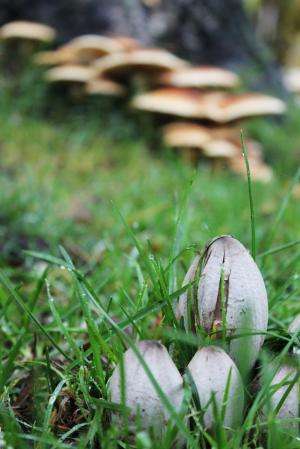The number of fungal species has been greatly overestimated

A study led by the researchers of the University of Tartu Natural History Museum discovered that the most species-rich fungal communities are in tropical rainforests. The estimated global species richness of fungi, 1.5–5.1 million species, however, seems to be a vast overestimation, according to their data.
"Together with 35 research institutions we collected approximately 15,000 soil samples from various areas across the world. We then sequenced the DNA in the collected samples, using the new generation sequencing method. When analysing the soil samples, we found more than 45,000 fungal species. To our knowledge, this is the largest dataset of biodiversity studies published so far," said Leho Tedersoo, Senior Research Fellow of the University of Tartu Natural History Museum and the manager of the project.
"The coordination of the activities of all partners and obtaining all the required permits for getting the samples meant a lot of paperwork. In some countries we could not collect samples just because we could not get the permits. For generalisations, however, the amount of the collected material is more than enough," said Tedersoo.
As the main findings, the study concluded that the species richness patterns of fungi in general follow these of plants and animals – i.e. the species richness is the highest in tropical rainforests and general rules of biogeography apply. In the past, it was commonly held that the latter do not apply to microorganisms – that all forms are present everywhere depending on the substrate. The study found that the number of fungal species in the world has been greatly overestimated.
"We discovered that endemism – the phenomenon that particular species live only in a rather limited area – is also very common among fungi," explained Tedersoo. Tedersoo added that there are also many species that are spread across the world, such as mould and animal pathogens. "Although the spread of plant and animal species in the temperate climate zone of the northern hemisphere is limited to continents, many fungal species are equally spread in Asia, North America and Europe. This indicates that fungi have a more efficient spreading mechanism: microscopic spores," said Tedersoo.
"The research findings will not save the world, but help the researchers understand the global biological processes much better. As the species richness and spread of fungi mostly depend on precipitation, temperature and vegetation, it can be assumed that climate change strongly affects mycobiota in dry and cool regions. The good news for the Estonian mycophile is that when it comes to mycorrhizal fungi, which include almost all edible and poisonous mushrooms, the forests of our climate zone are the richest in species. The age-old Abruka limetree forest holds the record," said Tedersoo.
In the future, the working group of ecology of biological interactions is planning to focus on detecting functional difference in soil organisms in different ecosystems of the world, to show how these organisms have adapted to different climatic and soil-formation processes and to historical-biogeographical factors.
"Such analyses require computational power and cloud services, which are available in the PlutoF system and at the High Performance Computing Center of the University of Tartu," said Tedersoo. "Huge work has been done by my colleagues Mohammad Bahram, Sergei Põlme, Urmas Kõljalg and Kessy Abarenkov. These days, analyses of such scale cannot even be conducted by a single researcher or a small working group."
More information: "Global diversity and geography of soil fungi." Science, 28. November 2014: Vol. 346 no. 6213. DOI: 10.1126/science.1256688.
Journal information: Science
Provided by University of Tartu


















